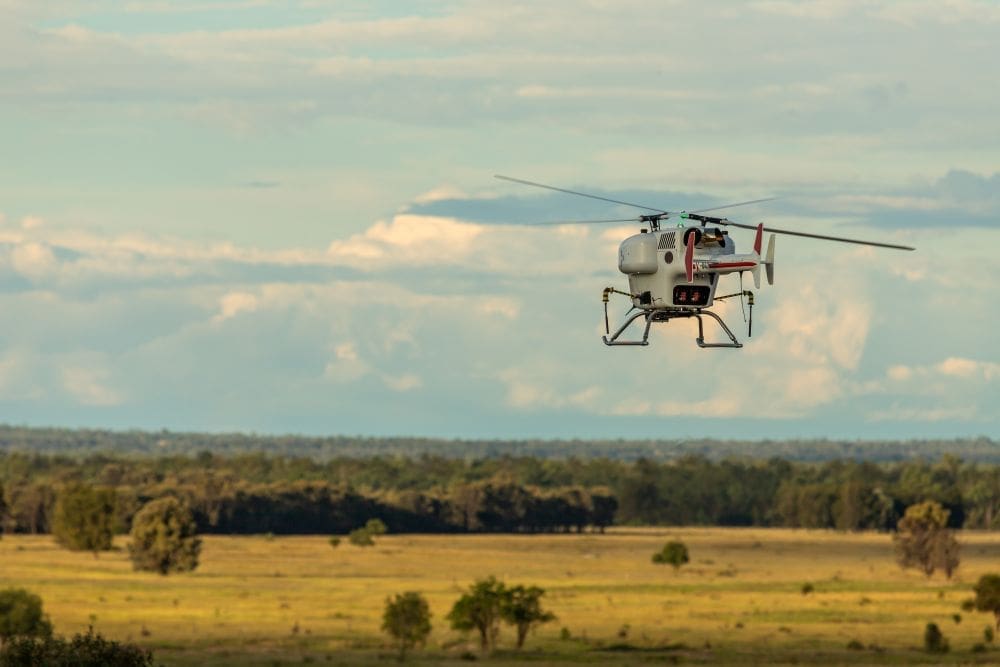As power demand skyrockets, the energy sector continues to scramble to maintain the current state of the electrical grid while also taking steps to fortify and improve it. In simple terms, it is tasked with ensuring it remains operational in its current state while improvements and expansion take place. A critical factor in ensuring resiliency comes with monitoring the grid’s current state. While historically performed by manned aircraft, SwissDrones offers a solution that not only boasts a more economically pleasing outcome but enhances workplace safety simultaneously.
SwissDrones is a leading provider of advanced aerial intelligence solutions and long-range unmanned helicopter systems. With approval to operate in over 35 countries to fly long-range beyond visual line of sight missions, the company recently announced its first contract with Southern Company, a US-based energy company. With distribution and transmission lines spanning hundreds of miles, SwissDrones unmanned aircraft will replace conventional methods and patrol those electrical paths to ensure operation.
The company’s unmanned aerial vehicles, or UAVs, offer vertical takeoff and landing capabilities paired with a high payload capacity. The results provide a cost-effective alternative to aircraft piloted by humans. Additionally, the SwissDrones solution pays off with its ability to reduce carbon dioxide emissions by up to 95 percent, making it a sustainable solution.
“Our aircraft is a platform to capture data and intelligence, which is processed post-flight to generate the actual outcomes in terms of actionable insights,” says Ulrich Amberg, SwissDrones CEO. ”
According to Amberg, Southern Company procured two of its unmanned aircraft, which are approximately 10 feet in length and weigh 190 pounds each. They have obtained approval to conduct unmanned surveillance missions of their infrastructure beyond the line of sight by the product’s development.
“It’s a pretty bold vision,” says Amberg. “It’s what some call the Holy Grail in the drone industry.”
The drones will be outfitted with sensors to retrieve and record specific data and can travel more than 5,000 miles. According to Amberg, Southern’s SwissDrones operators will be able to program the GPS coordinates of transmission and distribution line poles, allowing the drones to follow the path, pole to pole. To overcome potential link loss scenarios, the aircraft is outfitted with autopilot technology. This feature enhances safety to prevent possible crashes and damage situations.
“The operator programs a mission, which is typically executed autonomously,” says Amberg. “The remote pilot on the ground is there to monitor safe flight and just react on unexpected circumstances or air traffic control.”
Amberg indicates that the SwissDrones craft are typically deployed from mobile command centers in the general areas where the missions will be flown. Local teams perform pre- and post-flight checks, along with fueling activities. The pilots can reside in a central location elsewhere.
Amberg sees a promising future in drone technology, with significant opportunities in the energy sector. Companies like Southern, which are improving methodologies to ensure grid resiliency, serve as a precursor to the future use of the SwissDrone technology. Enhancing workplace safety while accelerating efficiency is a critical measure of a successful business, and the ability to achieve this feat while reducing emissions is essential. Amberg sees more within the energy sector, seizing the opportunity that unmanned drone technology offers the industry.
Headline image courtesy of SwissDrones.
Nick Vaccaro is a freelance writer and photographer. In addition to providing technical writing services, he is an HSE consultant in the oil and gas industry with twelve years of experience. Vaccaro also contributes to SHALE Oil and Gas Business Magazine, American Oil and Gas Investor, Oil and Gas Investor, Energies Magazine and Louisiana Sportsman Magazine. He has a BA in photojournalism from Loyola University and resides in the New Orleans area. Vaccaro can be reached at 985-966-0957 or nav@vaccarogroupllc.com.






